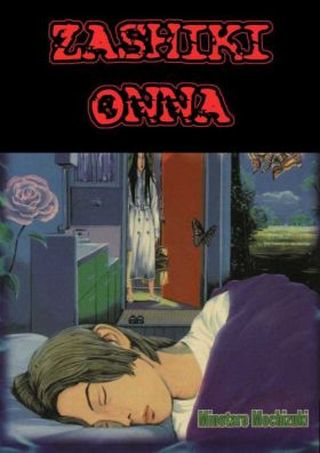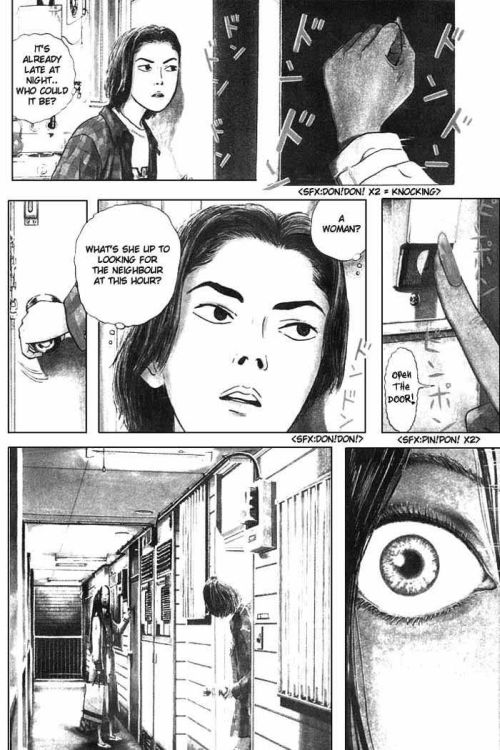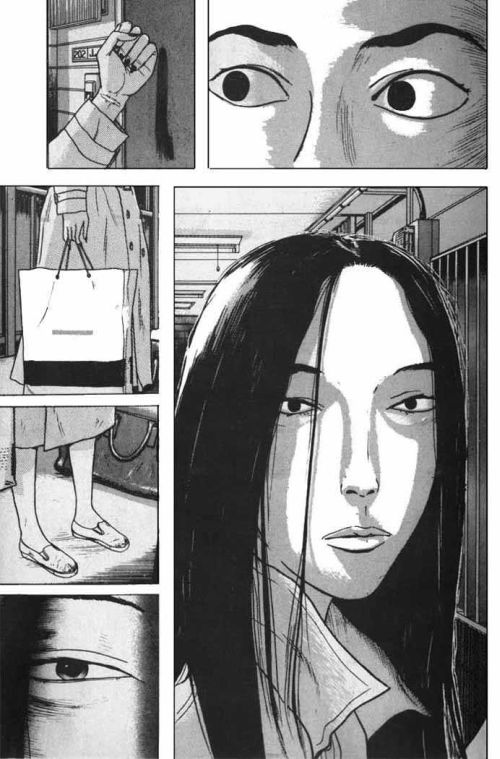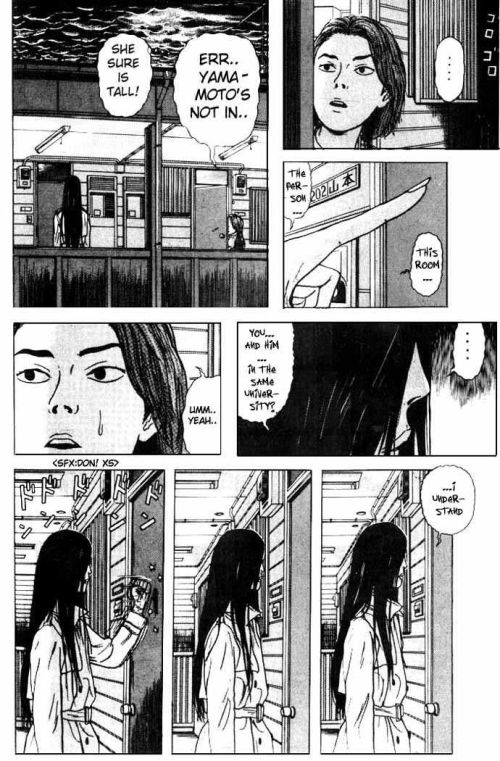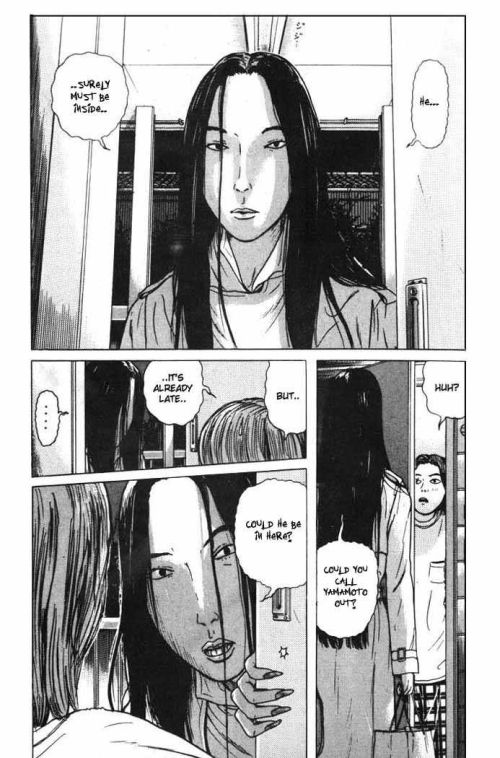I just got started on the pencils for chapters 3-4 of Small Shen, and this will probably take up a large chunk of my time for the next month or so. I also made some headway on my story for the Peter Pan anthology that the Bento creators are putting together – I wrote the whole story, which is 10 pages in total (including title page), and called We are the Pickwicks. You’ll get to read the story eventually, so I’ll keep mum on what it’s about.
The other piece of news is… I finally got the Store section up! It’s an Amazon Store at the moment, mostly for American/Canadian buyers; but for the International people, I’m also setting up a Book Depository Store, since that online store has Free International Shipping! The setup process is more complex than Amazon’s, so hopefully I’ll get that store up in the next few weeks.
Zashiki Onna (manga)
(1993, Mochizuki Minetaro)
This week I’m recommending a one-shot manga called Zashiki Onna, which is a horror manga that is light on gore but heavy on the creepiness. Against all that is holy, I am linking to a pirated manga site, because sadly it’s the only way to read this manga in english (for now anyway).
This short, 1-volume horror manga is created by Mochizuki Minetaro, the same guy who created Dragon Head. Those reading manga in the early days of TOKYOPOP may remember this dark story about people trapped in a long dark tunnel, victims of what appears to have been an earthquake. This is an earlier work from him, written in a time where hardly anyone has heard of “stalking”. Perhaps that’s why it’s rather obscure – apart from the short length, it’s also a fairly old manga. But it’s a good one.
Plot
Hiroshi Mori is a typical young man in college – living in a cheap rental apartment and fantasising about a girl he likes. All was fine, until one night when he hears a persistent banging on his neighbour’s door. He pokes his head outside to see what’s going on, which was a very bad move – it was a tall, creepy woman with long black hair, wearing a trenchcoat and carrying old shopping bags. She insists that she was looking for his neighbour, but he claims to know nothing and leaves. The next night she is back again, and it slowly becomes clear that she has shifted her attention from his neighbour… to him.
Why I Recommend this Manga
It’s short, and it’s creepy. If you like your horror weird and spooky, as opposed to gross and gore-splattered, this is the manga for you. It depends on what you find creepy, and in my case, gore doesn’t scare me at all – and sadly (for me), gore is the more common approach to horror in Japanese manga. Just look at my attitude to typical (and prolific) Japanese horror masters: Junji Ito of Uzumaki fame, and Kazuo Umezu of Drifting Classroom. These two manga artists are horror staples who have been around for decades, but their style largely relies on spilling blood, and distorted people doing black-shadows-on-typical-“horror”-face, something I can’t stand. Modern horror stories tend to use a cutesy artstyle, which doesn’t sit well with me either. Which is why Zashiki Onna is such a “pleasant” surprise – it’s style is ugly-realistic, but with dramatic lighting that’s entirely suited to the storyline. I feel safe recommending this to any kind of horror fan, as opposed to just manga-reading horror fans. That says a LOT about this story.
Okay, stalking stories have been around for yoinks, but because of the art style and the straight-forward story-teling, this manga retains a lot of its power. Not that readers understood that this was a “stalker” story when this story first came out. Most readers back in 1993 probably knew nothing about stalkers, and so were probably quite freaked out by what they might have originally thought was just some over-zealous admirer. Even the title, Zashiki Onna, reflects what the true form of the female stalker might have been. You see, this manga marries two of the most enduring horror-supernatural tropes of Japanese culture – a creature called the Zashiki-Warashi, and a famous Japanese ghost story written in 1825 called Yotsuya Kaidan. Without understanding these two cultural references, most readers these days may just think that this is just a “typical stalker story”, and that the stalker was a human. Not so.
In Japanese mythology, a Zashiki-Warashi is a creature who appears in the form of a young child, who often lives in big houses with a long history. These creatures typically bring great wealth to the household, which makes it seem benign… but not really. If a Zashiki-Warashi should leave your house (and they can leave on a whim), then disaster will strike and your household wil lose all the wealth it’s acculmulated. So it’s a creature that is more like a double-edged sword – and the reference to Zashiki in the title of the story may hint that the stalker is a modern, twisted form of the Zashiki-Warashi.
The other reference – that of 19th-Century ghost story Yotsuya Kaidan – is a much more famous reference, due to it having influenced the storyline of famed J-Horror movie The Ring. When The Ring first came out, people waxed lyrical about the story… except people who are already familiar with Yotsuya Kaidan. Even though Yotsuya Kaidan is about a vengeful female ghost called Oiwa who comes back to relentlessly haunt her evil Samurai ex-husband, it’s really about how the re-telling of a story can give it great power. Most people miss the true story of Yotsuya Kaidan, which is about it’s author researching the history of Oiwa legends, and discovering all the various versions of it is giving form to this demonic creaure called Oiwa. Which sounds like the storyline of the movie Candyman, but variations of this idea has been around for centuries. The Ring simply represents a modernised re-telling of it.
All-in-all, if you’re armed with knowledge of these two cultural facts, it may make Zashiki Onna a more interesting read. It’ll certainly help explain the ending, which may confuse some people who don’t realise that the title alone explains that the stalker isn’t human to begin with. Which then makes it not a “stalker story”, but a “ghost story”. And guess what? It’s more successful that way.

